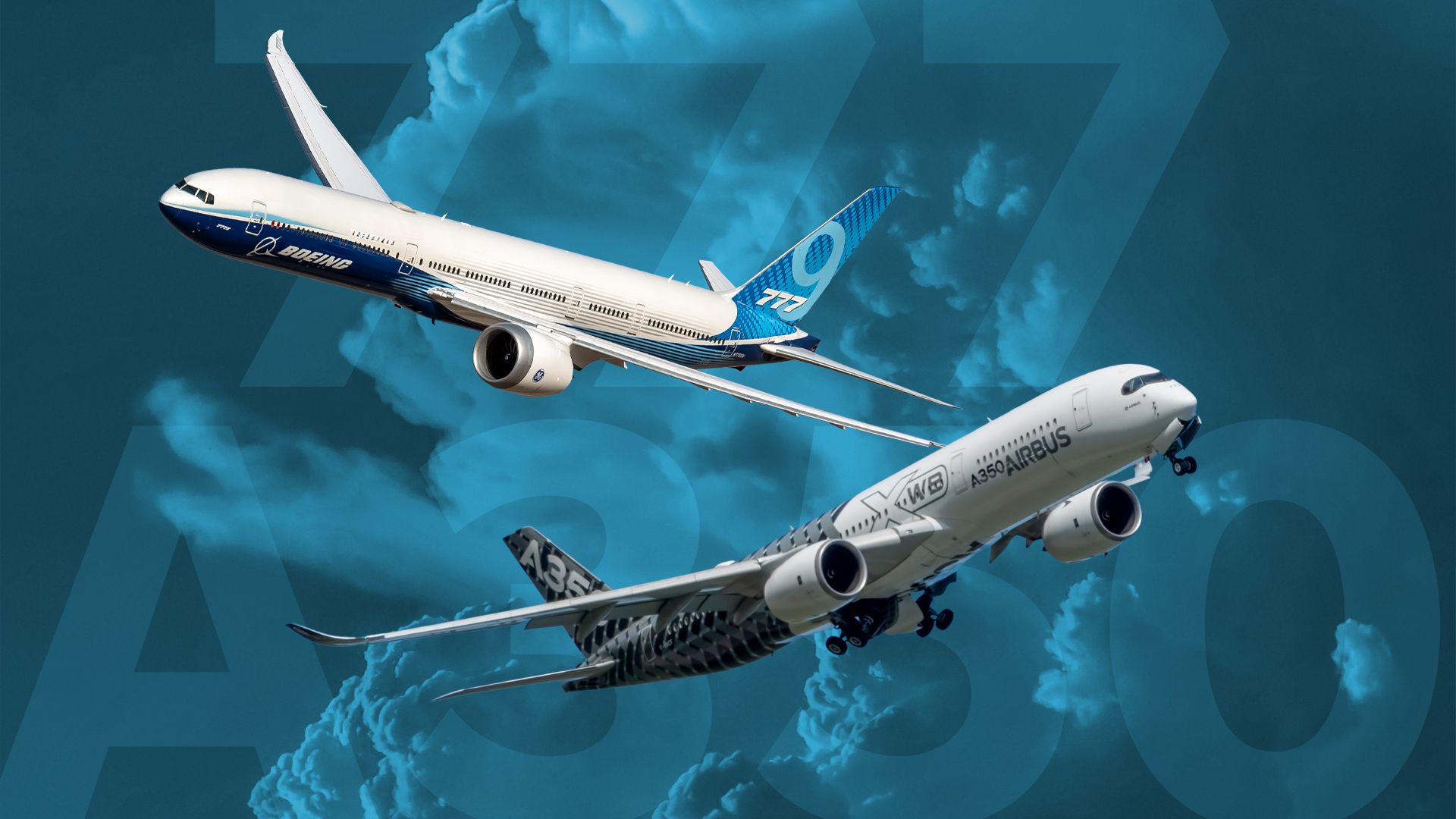Which Plane Is Bigger: Airbus A350 or Boeing 777?

Understanding the Size and Capabilities of the Airbus A350 and Boeing 777X
When comparing the Airbus A350 and Boeing 777X, it's clear that the Boeing 777X family is generally larger. The Boeing 777-9, in particular, stands as the largest twin-engine commercial aircraft currently in development. However, there are nuances when comparing specific variants from each family. For example, could the largest A350 variant (the A350-1000) be larger than the smallest 777X variant (the 777-8)? And in what areas might the A350 have an advantage over the 777X?
The Airbus A350-900: Smallest Variant
The Airbus A350-900 is the smaller of the two A350 variants and is the smallest among the four aircraft considered in this comparison. It has a maximum takeoff weight of 623,907 lbs and a maximum payload of 141,096 lbs. The aircraft has a wingspan of 212.43 feet and stands 56.04 feet high. Its length is 219.16 feet, with a cabin length of 167.45 feet and an internal cabin width of 18.41 feet.
The A350-900 is powered by Rolls-Royce Trent XWB-84 turbofans, which provide 84,000 lbf of thrust. It has a typical three-class seating capacity of 300–350 passengers and a maximum seating capacity of 440 passengers. Airbus lists its range at 8,500 nautical miles. However, the A350-900ULR version, developed for Singapore Airlines, boasts a range of 9,700 nautical miles, making it the longest-range commercial aircraft on the market.
The Boeing 777-8: Smaller 777X Variant
The Boeing 777-8 is the smaller, longer-range variant of the 777X family. While it has struggled to attract significant orders compared to the 777-9, it still offers impressive performance. Powered by GE Aerospace GE9X engines, which provide 110,000 Ibf of thrust, the 777-8 has a taller profile (around 64 feet), a longer wingspan (235.4 feet), and a wider internal cabin (19.55 feet). Its length is 232.48 feet, and it has a range of 8,745 nautical miles.
The 777-8’s max takeoff weight is 774,999 lbs, and its max payload is estimated at around 159,000 lbs. While it has a greater MTOW than the A350-1000, its payload is slightly less. Its cabin length is likely shorter than the A350-1000, though estimates vary based on the BBJ version.
The Airbus A350-1000: Largest Airbus Aircraft
The A350-1000 is the largest aircraft built by Airbus. It stands shorter (56.04 feet) than the 777X variants, has a shorter wingspan (212.43 feet), and a narrower internal cabin (18.41 feet). Its length is 242.09 feet, and its cabin length is 190.29 feet. The A350-1000 is powered by Rolls-Royce Trent XWB-97 turbofans, which provide 97,000 lbf of thrust—more than the A350-900 but less than the 777X.
Airbus claims the A350-1000 can carry up to 480 passengers in a typical three-class configuration, with a range of 9,000 nautical miles. The A350-1000ULR version, designed for Qantas, is rumored to have a range of 9,700 nautical miles, matching the A350-900ULR.
The Boeing 777-9: Largest Aircraft
The Boeing 777-9 is the largest aircraft in the 777X family. It measures 251.71 feet in length, has a maximum takeoff weight of 774,999 lbs, and stands 64.63 feet tall. It has a wider wingspan and a more spacious internal cabin. While its cabin length is estimated at around 189 feet, it falls short in range, with a reported range of 7,285 nautical miles—significantly less than the A350-1000.
Despite its size, the 777-9 is not widely used in the North American market. Major US-based airlines have not ordered the jet, while international carriers like Emirates and Qatar Airlines have placed significant orders.
Popularity and Order Book
The A350-900 has been in service for over a decade, giving it a head start in attracting orders. As of now, the A350 family has received 1,429 orders, with 663 delivered and 766 remaining. The A350-900 alone has surpassed 1,000 firm orders. In contrast, the 777X family has 551 total orders, with the 777-9 being the most popular variant, followed by the 777-8.
Comparing Performance and Technology
While the 777X is larger overall, the A350 has advantages in certain areas. The A350-900ULR and A350-1000ULR offer extended ranges that rival or exceed those of the 777X. Additionally, the A350 makes extensive use of lightweight materials, with 70% advanced materials (including 53% composites and 14% titanium), compared to the 777X’s 30% composite usage.
In terms of efficiency, the GE9X engines on the 777X are 5% more efficient than the A350’s engines, but Rolls-Royce is continuously improving its technology to stay competitive.
Conclusion
While the Boeing 777X family is larger overall, the Airbus A350 offers unique advantages in range, efficiency, and material use. Each aircraft caters to different market needs, with the 777X appealing to long-haul, high-capacity routes and the A350 offering versatility and efficiency for a wide range of operations.
Post a Comment for "Which Plane Is Bigger: Airbus A350 or Boeing 777?"
Post a Comment